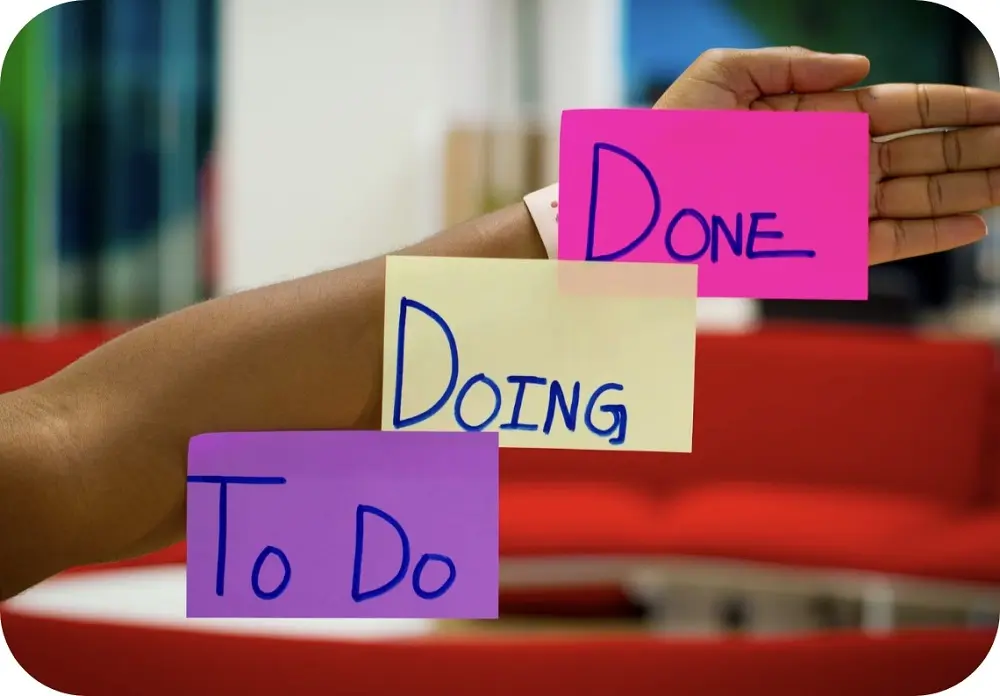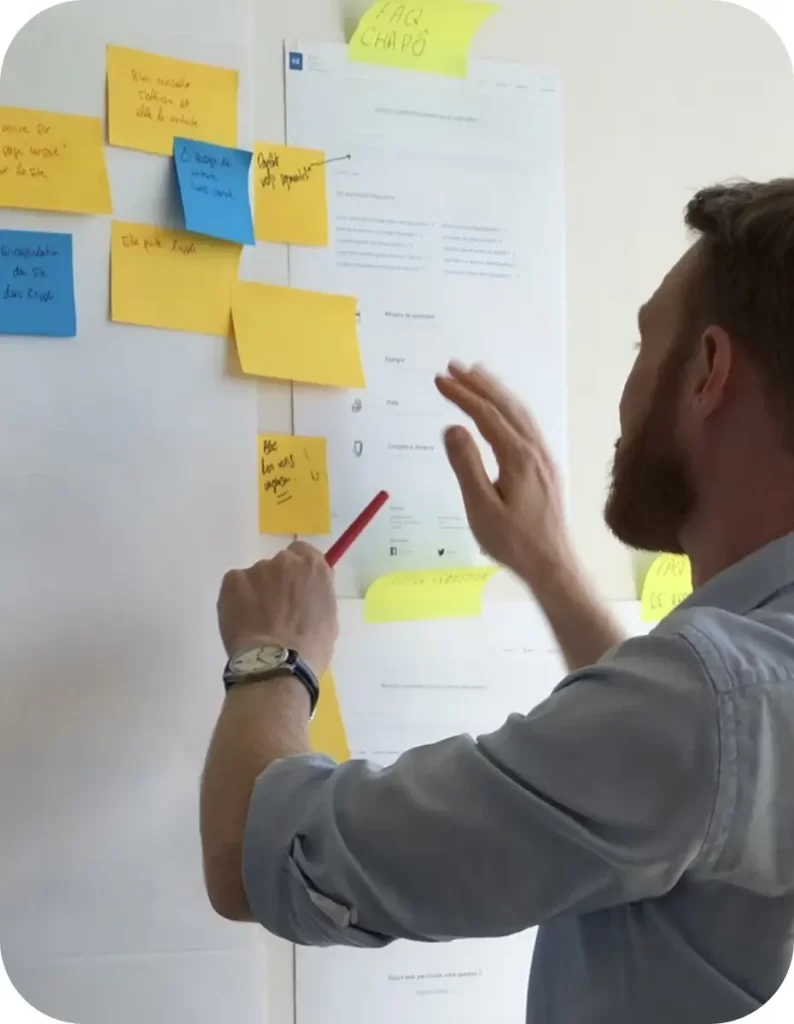Scrum: Success, Blockers, and Pathway

The five values that Scrum comprises are courage, commitment, openness, focus, and respect. In addition, this methodology promotes the development, delivery, and ability to sustain complex products via continuous collaboration, accountability, and iterative progress.
Any project requiring a flexible approach to deliver service or a product will benefit from Scrum methodology.
What is Scrum?
Scrum is a dynamic project management method for Agile project management.
Known for making big, complex tasks more manageable. It breaks work down into short, focused bursts called Sprints, allowing teams to work in small, achievable sections and adjust as they go.
Originally, the introduction of Scrum methodology was for software teams. However, Scrum’s straightforward and collaborative approach attracted all sorts of industries and project initiatives.
Scrum project management methodology is all about being nimble, improving step by step, and working closely together to get things done efficiently.
In a business world where change is the only constant, Scrum helps organizations stay flexible, streamline their processes, and churn out valuable outcomes with the nimbleness that Agile project management is famous for.
Is Scrum Necessary for Agile Project Management?
The simple answer is “No”. Agile project management doesn’t necessarily have to involve Scrum.
The concept of Agile project management is a broad philosophy that includes a set of principles outlined in the Agile Manifesto. Agile project management focuses on flexibility, customer collaboration, and responsiveness to change.
Scrum is one of the most popular Agile frameworks to implement these principles. However, there are several other methodologies under the Agile umbrella. These methodologies include Kanban, Lean, Extreme Programming (XP), Feature-Driven Development (FDD), and Dynamic Systems Development Method (DSDM), among others.
Each framework has its unique approach and practices but shares the core Agile principles of iterative development, continuous feedback, and adaptability.
Therefore, the choice of which Agile methodology to use will depend on the team’s specific needs. These needs depend on the nature of the project and the environment in which the organization operates.
Why Is Scrum Helpful?
- Removing possibilities of mistakes, as well as rectifying errors, is easy with the Scrum methodology.
- Project execution with Scrum improves the visibility of different stages of the process through all stages of development.
- The short sprints, coupled with constant feedback, make it easy for the team to cope with any changes required by the client.
- The access to enhanced flexibility offered by this methodology ensures the ability to change the development, regardless of the stage it is in.
- Scrum simplifies any business wherein documentation is tricky.
- It promotes quicker results and more straightforward testing procedures for enhancing the overall output and quality.
- It improves the team’s motivation, helps measure individual productivity, and ensures timely product delivery.
Limitations of Scrum Methodology
- This methodology cannot work unless the scrum master fully believes in their team—however, the lack of strict governance results in the project’s failure.
- Project development can have a negative impact whenever a team member leaves mid-development.
- It usually expands over several sprints because it offers no cost valuation or prediction regarding the time limit.
- It’s ideal for small teams of experienced individuals to accomplish tasks and requires a strong commitment from all members.
Steps for Scrum Project Management
We can implement Scrum to improve productivity and efficiency in all types of projects. Scrum is helpful regardless of whether it is sales, marketing, or even organizing an event.
The scrum framework is based on the need for a high level of interaction, visibility, constant communication, and improvement transversal to all processes at every step. Here are the steps for the successful implementation of the Scrum framework.
Step 1: Define The Elements
To implement Scrum, consider all the elements that make it an excellent framework for product management. We must define the roles, including the product owner, the scrum team, and the scrum master. The final aspect is to define the duration of the sprint.
Deciding Scrum Sprint Length
We can consider 2 weeks as the optimum sprint length. However, When you’re setting the duration for Sprints in Scrum project management, it’s crucial to consider a few key factors to make sure the time frame promotes productivity, satisfies stakeholders, and matches your team’s abilities.
A Sprint needs to be long enough to create a valuable, deliverable product increment but also short enough to maintain the team’s focus and drive. Typically, Sprint lengths vary from one to four weeks.
Choose a one-week Sprint for projects that demand quick feedback and adjustments, especially when tasks are small, and clarity is high, and the cost of delay is significant.
Opt for a four-week Sprint when dealing with complex projects that need more time for research, design, development, and testing.
Let the team’s previous achievements, the complexity and uncertainty of tasks, and stakeholders’ requirements for frequent reviews and changes drive your choice of Sprint length.
The goal is to find a cadence that keeps the team’s energy high. Moreover, the Sprint length must allow for regular product reviews and adaptation to consistently deliver value to the customers without leading to burnout or compromised quality.
It’s also smart to reevaluate the Sprint length after a few cycles, adjusting based on the team’s experience and feedback.
Step 2: Creating A Backlog
Once the team is in place and all the responsibilities are assigned, the next step is to create a prioritized list of objectives. A plan and its implementation differ between a dream and a goal. The backlog is essentially a roadmap of the product. It includes creating a single detailed list including all the functionalities, tasks, and their priority. The three work items included are epics, user stories, and tasks.
Step 3: Sprint Planning
During the first sprint meeting or sprint planning stage, we must refine the details of the activities. Moreover, we must determine different nuances associated with project completion. These include estimations and commitments for completing a specific number of stories and tasks. The entire team must be a part of the sprint planning session.
Step 4: Improve Visibility
The team’s progress must be visible and transparent, following the principles and values of the scrum framework.
Apart from manual representation of task completion and activity tracking, we can use online tools such as Trello or TFS (Team Foundation Server). You may find some more such tools here.
Transparency and visibility within the team improve due to daily scrum. The three questions we need to answer within this 15-minute daily meeting are as follows:
- What tasks were completed yesterday?
- What will be completed tomorrow?
- Are there any obstacles, and if yes, what are they?
Step 5: Sprint Review
The real progress on the product is demonstrated during the sprint review conducted toward the end of the sprint.
The iterative methodology prescribed by Scrum promotes the visualization of the product’s progress. This, coupled with a demo or a review of the product, shows how far along the product is. All the interested parties in the project must be present at this meeting.
Step 6: A Retrospective
After completing the iteration, the team must get together for the sprint retrospective. As the name suggests, this meeting facilitates the exchange of ideas, thoughts, and opinions about all that transpired during the sprint.
From determining what went well to what we can do better and areas with scope for improvement, this meeting is crucial to improve a sprint’s efficiency.
Step 7: Next Cycle
After considering the team’s experience, along with any obstacles faced and the incorporation of improvements, the final step is to start the process again.
Scrum is one of the most widely used and adopted project management frameworks. It is not just restricted to its sectors or software development. Therefore, we can use Scrum project management in any industry, and any kind of project.
Adobe, ING, Vodafone, Intel, Microsoft, Google, and IBM are some leading global companies that successfully implemented the Scrum framework to improve their productivity.
By creating hyperproductive teams and improving responsiveness, transparency, and collaboration within the organization, this framework has helped these organizations in numerous ways.
The only thing we must keep in mind is the need for constant improvement in today’s dynamic environment and ever-changing world. Scrum caters to this need.


Nisha Arya is a Data Scientist and Technical writer from London.
Having worked in the world of Data Science, she is particularly interested in providing Data Science career advice or tutorials and theory-based knowledge around Data Science. She is a keen learner seeking to broaden her tech knowledge and writing skills while helping guide others.





